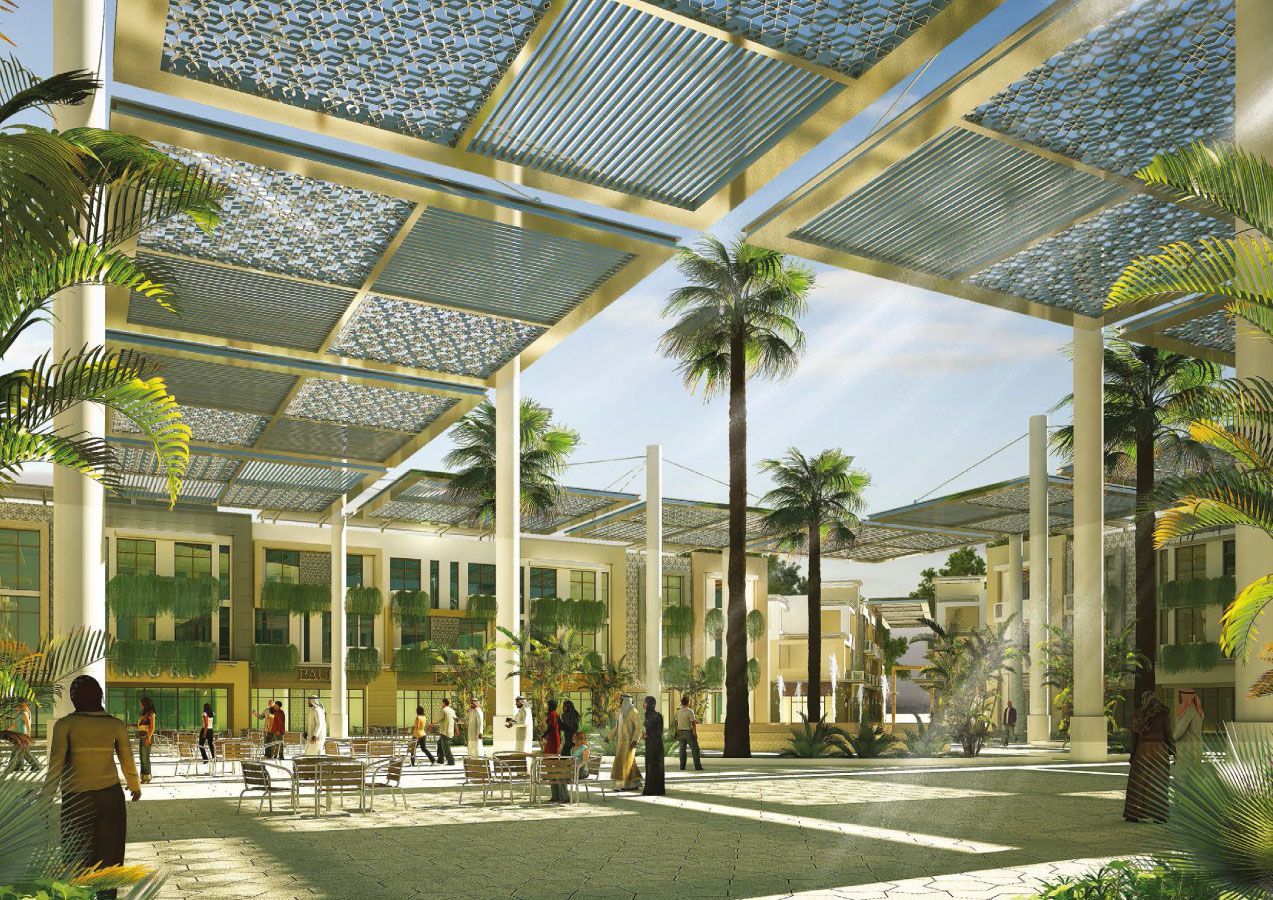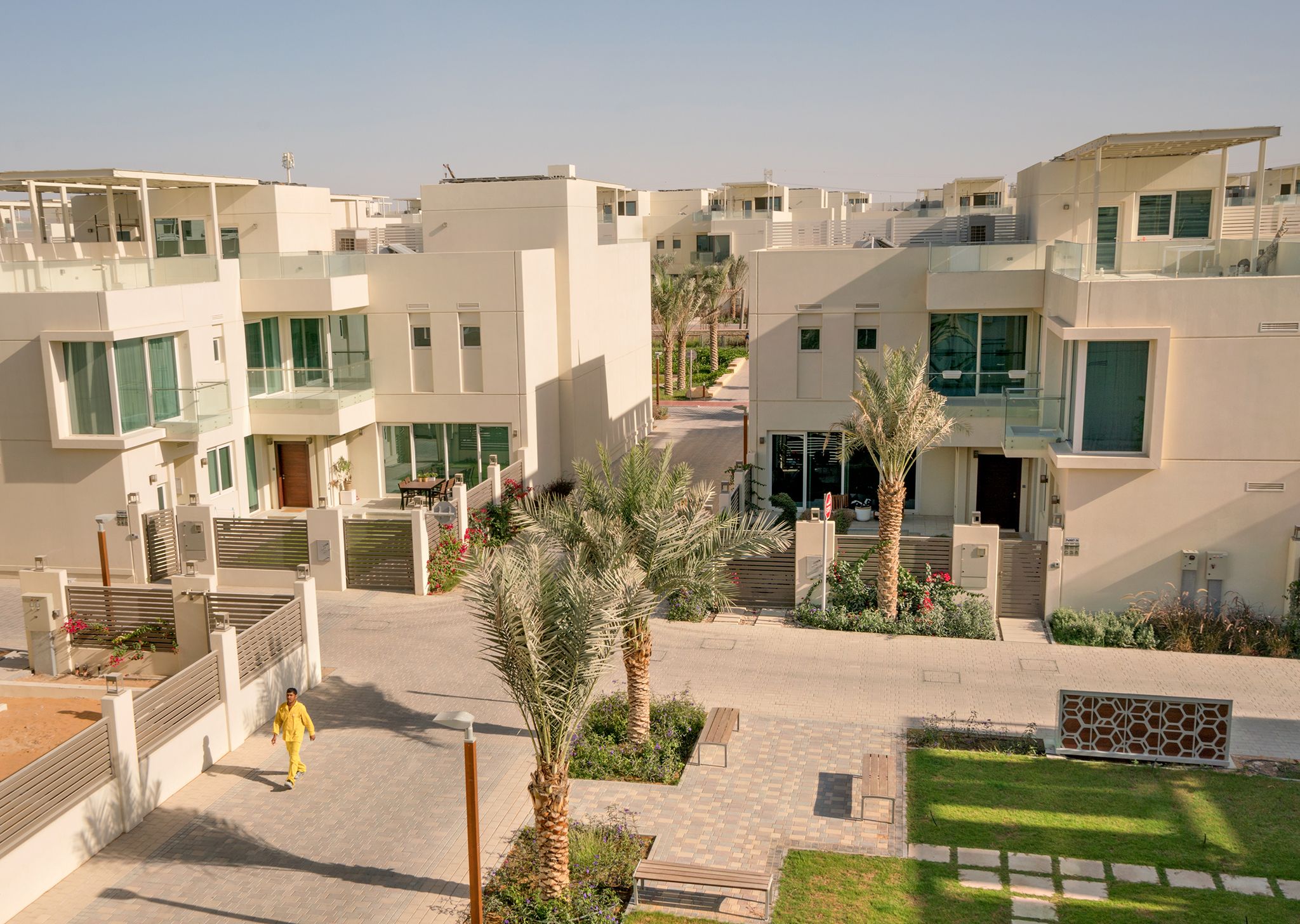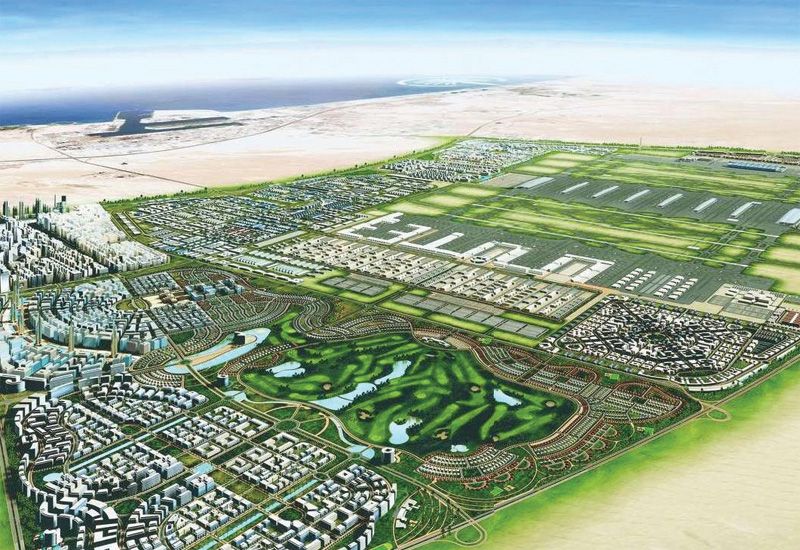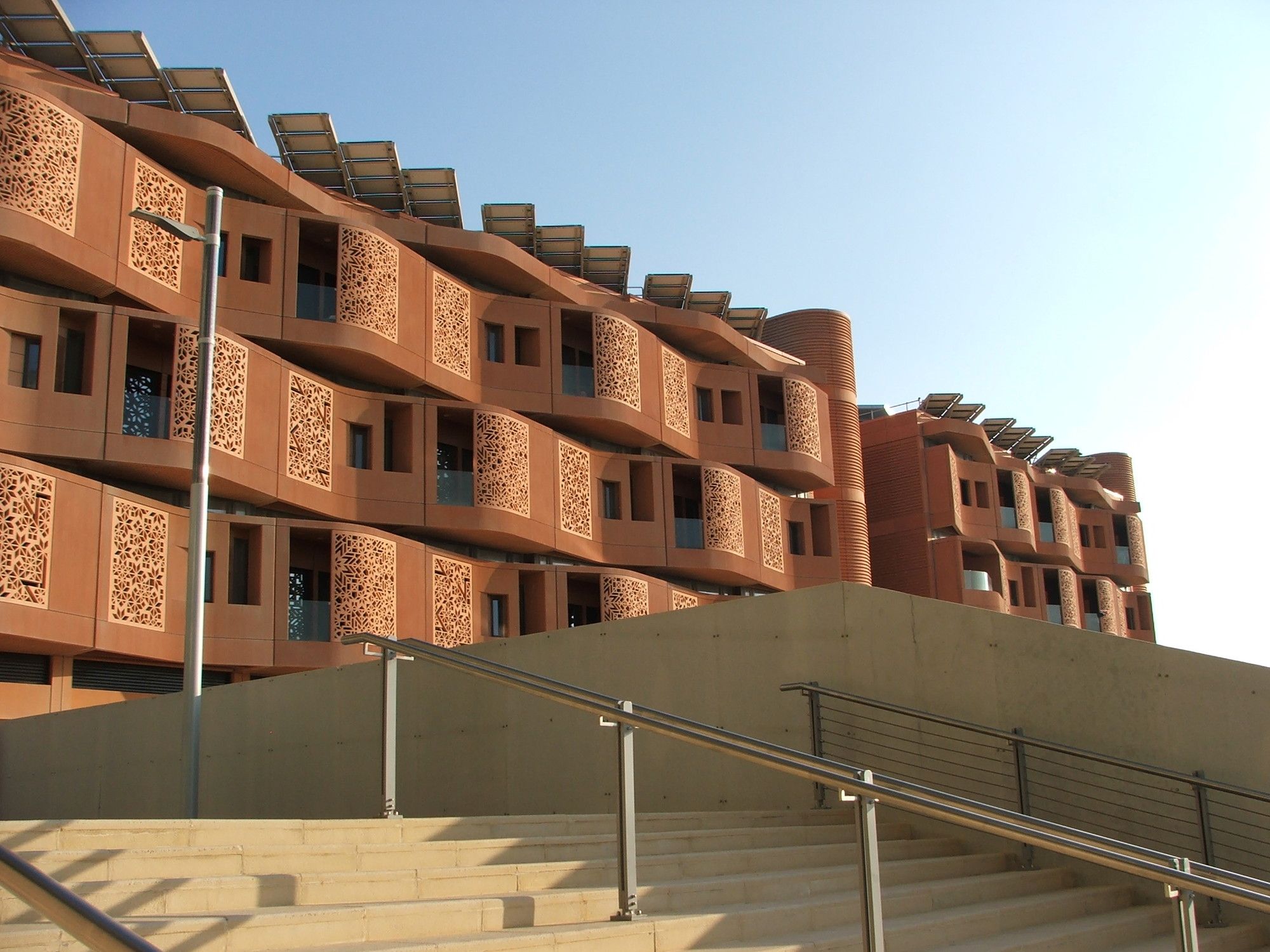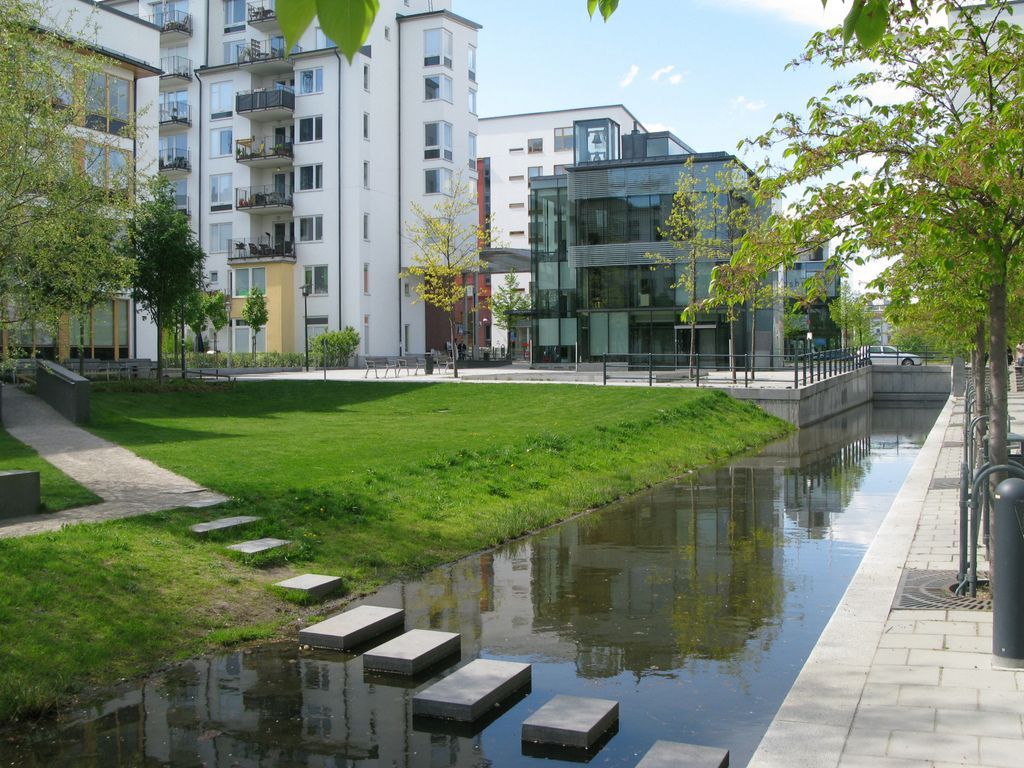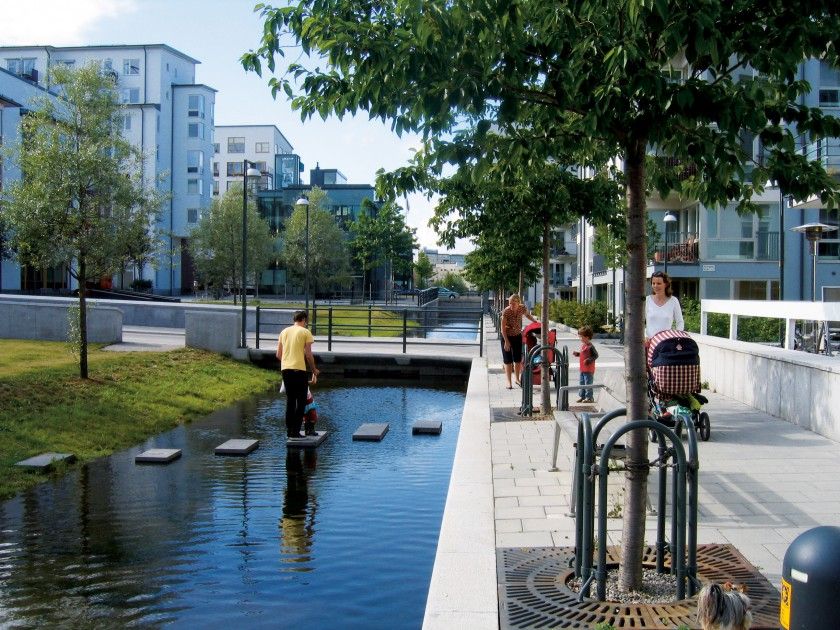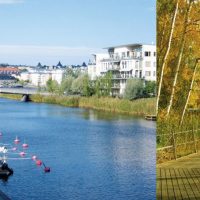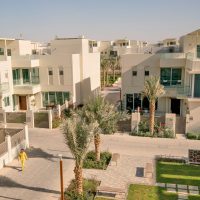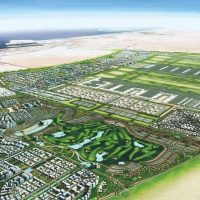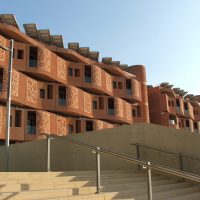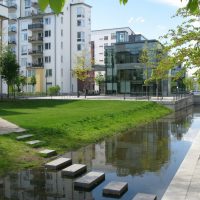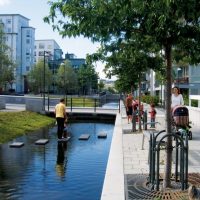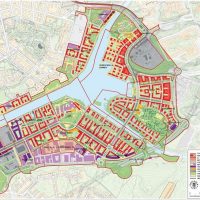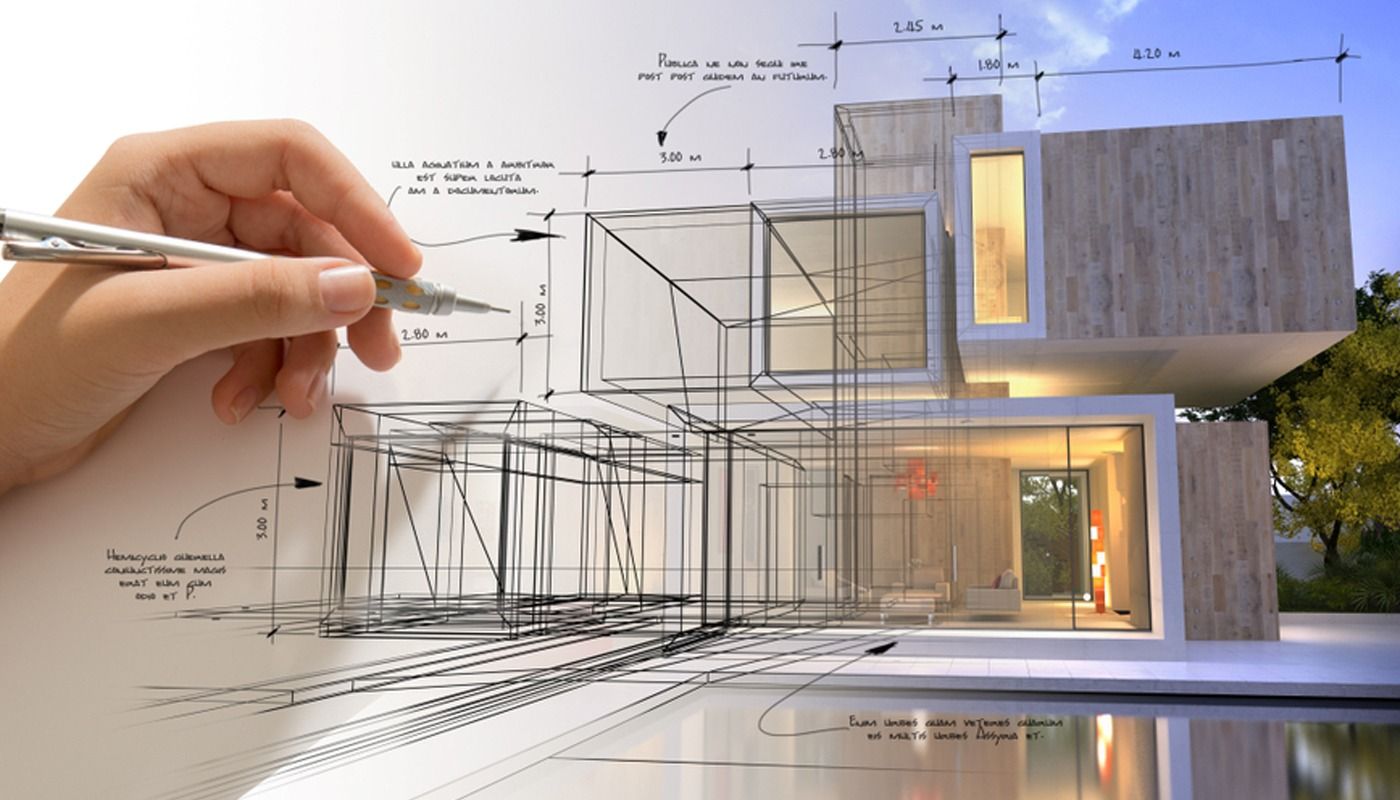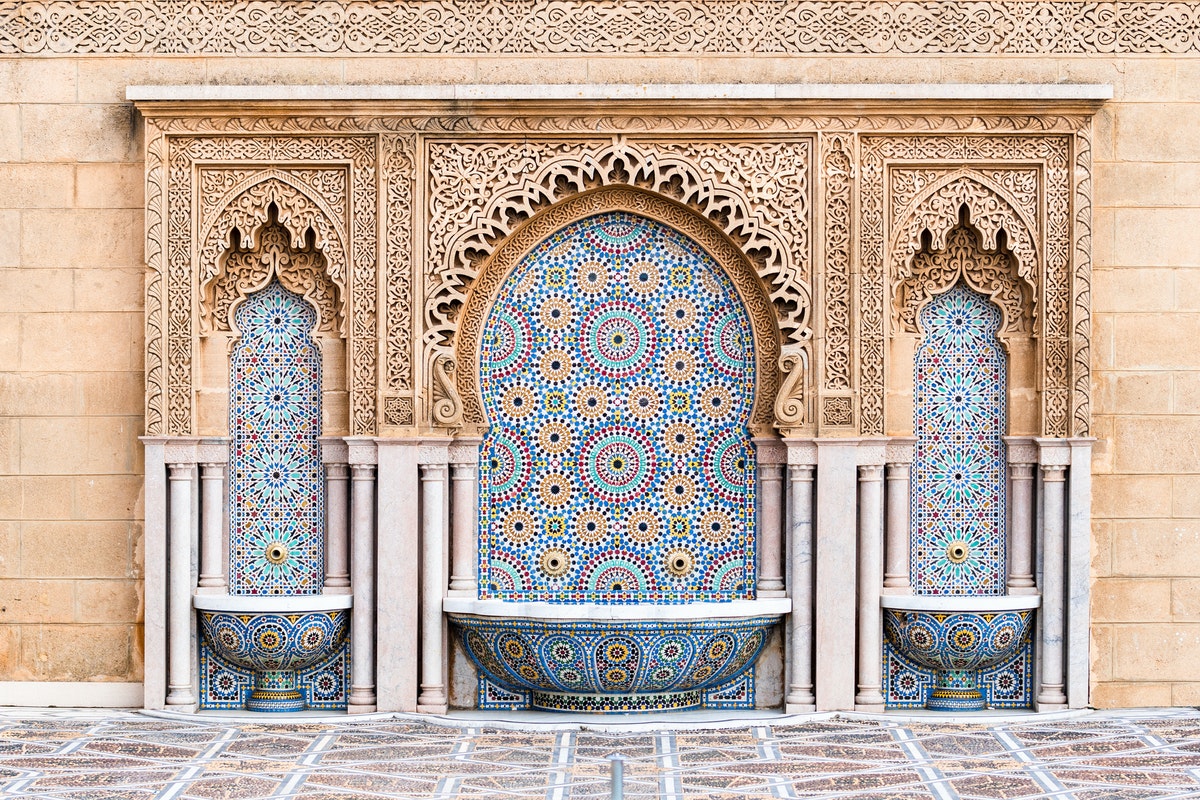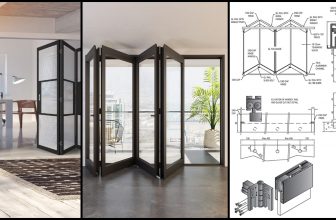Are we living in sustainable cities? In our media-saturated culture, it can be argued that the threat of climate change seems to have been overexposed. The scientific evidence is incontrovertible: most of this change is due to human activity and the process is speeding up as more and more carbon dioxide, methane, and other greenhouse gases are pumped into the atmosphere. The next ten years are critical. Carbon dioxide emissions must be cut rapidly. If they are, according to the Intergovernmental Panel on Climate Change, we may limit the rise in global temperatures to two degrees centigrade. But if we continue on, the rise could be up to six degrees centigrade (Brown, 2009).
As a result, there is a renewed sense of urgency about how to respond, how to maintain our cities, and how to envision our future cities? In order to defend against and recover cities from severe climate disruptions, we need first to consider the concept of sustainable cities design to minimize the use of resources in our urban buildings, so we can go a long way to make our cities more sustainable (Storey and Baird, 2001).
In 1987, the World Commission on Environment and Development report “Our Common Future” also known as “the Brundtland Report” provided an early definition of what constitutes sustainable development. The term sustainable development is defined as: “the development which meets the needs of the present without compromising the ability of future generations to meet their own needs”. (Gaffron, Huismans, and Skala, 2005).
The main requirement for making human activity sustainable is to focus on the external relationships of the system, for example, the human settlements with its natural environment, which ultimately provides the basis for all our activities. Also, one must consider the internal relationships between the different elements within the system, as these processes determine the steps which need to be taken towards greater sustainability (Gaffron, Huismans, and Skala, 2005).
What is the meaning of sustainable cities?
Based on the idea of sustainability, it represents a balance that accommodates human needs without diminishing the health and productivity of natural systems. Also, it moves away from extraction and disposal systems that are energy-intensive, resource-inefficient and toxic, towards cyclical closed-loop systems that are restorative, dynamic, and flexible (Mendler and Lazarus, 2006).
There has been a considerable amount of research that defines and characterizes the design of a sustainable city. It is a complex issue. The physical dimensions of the urban form may include its size, shape, land uses, configuration, and distribution of open spaces-a composite of a multitude of characteristics, including the city’s transportation system and urban design features (Jenks and Jones, 2010).
Thus, sustainable cities are defined as: “the creation and responsible management of a healthy built environment based on resource-efficient and ecological principles” (Mendler and Lazarus, 2006). In another way, it means making buildings and infrastructure use land, material, energy, and water resources efficiently, to improve the health of ecosystems, and to address health issues relating to the indoor environment.
The major article question addressed is: to what extent and in what ways do sustainability dimensions contribute to sustainable cities?
In what ways do sustainability dimensions contribute to sustainable cities?
1. Environmental Sustainability
Environmental benefits are considered to create more compact urban forms where the concentration of uses means less need to travel and therefore lower emissions from vehicles. Also, the environmental benefits of open green spaces include reduced surface and air temperatures, due to solar shading and vaporization from trees (Jenks and Jones, 2010).
On one hand, green open spaces such as parks, protected green spaces, gardens, green corridors, street trees, and landscaping provide a high quality of life and vital ecosystem services, acting as “green lungs” which absorb and filter air pollution or act as filters for wastewater (Rode and Burdett, 2011).
On the other hand, the attractive public spaces in the city protect and restore biodiversity and natural habitats through the use of indigenous species of trees and plants which are integrated into the built environment. In addition, they provide shaded areas for visitors incorporating walking and bicycle trails, benches, and other recreational facilities such as cafes and restaurants (Masdar City, 2011).
2. Social Sustainability
There is an influence of urban form on social sustainability which is complex and encompasses issues of both quality of life and social equity. Higher densities and mixed-use urban forms will lead to a better quality of life due to more social interaction, community spirit, and cultural vitality. The social benefits include better access to facilities and jobs, better public transport and opportunities for walking and cycling, lower levels of social segregation, and less crime (Jenks and Jones, 2010).
3. Economic Sustainability
If we seek to balance the operating energy requirements with energy generation, then it is important to minimize the operating energy requirements and the design features of the building become important such as orientation, shape, glazing, shading thermal insulation, and so on, can all be used to minimize operational energy needs and costs and can also affect passive energy generation.
In addition to all that, material selection and the life span of the building are significant issues (Storey and Baird, 2001). Natural building materials such as local stones, bricks, and would require minimal processing and energy inputs when compared with more highly processed materials such as petrochemical products. They are characterized by their durability, adaptability, and low construction impact. Moreover, the use of local and regional materials enables energy savings in transport and compatibility with local building traditions which support the local economy (Gaffron, Huismans, and Skala, 2005).
Hammarby Sjostad Sustainable City (Stockholm, Sweden)
Hammarby Sjostad, “the town around the lake”, is the largest mixed-use housing development undertaken by the city of Stockholm since the 1960s. It is also one of the most financially successful in the city as well as a recognized model of sustainable neighborhood development around the world. With poor sources of renewable energy, how has the city become such a model of sustainable development? The secret lies in the waste flows and the city’s integrated approach to the design of its infrastructure (Fraker, 2013).
The overall mission goal of Hammarby Sjostad is to create a sustainable city that would be twice as good in terms of reduced environmental impact and which would use half of the amount of energy used in typical development. In achieving its mission, the city of Stockholm is setting out to create an international model of sustainable development (Gaffeny and Huang, 2007). Hammarby Sjostad has been planned with a dense settlement structure with typically four to five story buildings in a compact neighborhood outline but with reasonably spacious green courtyards. There are also established green roofs which are an important part of the stormwater system as well as providing important habitat.
All materials used – inside and outside the buildings – were carefully selected based on environmental considerations. The philosophy is to use proven, sustainable materials and products with environmental declarations and to avoid chemical products or building materials containing hazardous substances.
The Hammarby model includes energy conservation measures in which the goal is to reduce heat consumption by 50% and use electricity more efficiently compared to the Swedish average. Large-scale local wastewater and stormwater harvest and filtration were also implemented. The stormwater devices have high aesthetical quality, which is an important factor in the livability of the city (Ignatieva and Berg, 2014).
One of the most famous features of the Hammarby model was the implementation of a high-tech waste sorting and waste transportation system, also linked to the local energy production in Stockholm. The most spectacular technical system is perhaps the vacuum waste suction system of various household waste functions. Hammarby Sjostad is the first to have a tram line as the main commuting traffic mode. Other features of the sustainable local transport system include an alternative pedestrian and bicycle network, a large carpooling system, a popular ferry connecting the Hammarby Sjostad with Stockholm’s Downtown South Island.
The city features many aesthetic qualities: the traffic planning has created a successful soundscape with a low level of noise, allowing attractive sounds to enrich the residents’ living environments. The local areas in Hammarby Sjostad are easy to keep clean and maintain. The whole city has an attractive background fragrance due to lack of garbage, much green structure, soil surfaces, a lake, and designed streams (Ignatieva and Berg, 2014).
The Future of Sustainable Cities
To sum up, sustainable cities are urban communities that are committed to improving the well-being of the current and future residents. Evidently, they integrate economic, environmental, and social considerations. The inter-linkages among the three pillars of sustainable development are evident in cities that function as integrated systems. Innovative solutions in the urban space should span multiple sectors, including buildings, energy, urban transport, water, and solid waste.
Finally, it is important to emphasize that our economic future hinges on their productivity. Last but not least, sustainable cities are considered engines of growth and innovation; they contribute to poverty reduction, improved living conditions, cultural development, and knowledge generation.
Written by: Riham Nady – Edited by: Aiysha Alsane
References
- Brown, Paul. (2009). “Hallmarks of a sustainable city”. The Commission for Architecture and the Built Environment. London
- Fraker, Harrison. (2013). “The Hidden Potential of Sustainable Neighborhoods: Lessons from Low-Carbon Communities”. Islandpress, Washington, U.S.A.
- Gaffeny, Andrea and Huang, Vinita. (2007). “Hammarby Sjostad Stockholm, Sweden: Case Study”. Urban design in Planning.
- Gaffron, Philine, Huismans, Ge and Skala, Franz. (2005). “Ecocity Book I: A better place to live”. Facultas Verlags-und Buchhandels AG., Vienna
- Ignatieva, Maria E. and Berg, Per. (February 2014). “Hammarby Sjostad: A New Generation of Sustainable Urban Eco-District”. http://www.thenatureofcities.com
- Jenks, Mike, and Jones, Colin. (2010). “Dimensions of the Sustainable City”. Springer Dordrecht Heidelburg, London
- Masdar City. (January 2011). “Exploring the Masdar Institute Campus”. Abu Dhabi, U.A.E.
- Mendler, Sandra, and Lazarus, Mary. (2006). “The HOK Guidebook to Sustainable Design”. Second edition. John Wiley & Sons, INC., New Jersey
- Rode, P. and Burdett, R. (2011). “Cities: Investing energy and resource efficiency”. United Nations Environment Programme.
- Storey, J.B. and Baird, G. (2001). “Sustainable Cities need Sustainable Buildings”. CIB World Building Congress April 2001. Wellington, New Zealand
- photography by © Malena Karlsson / Jonathan Perrin
- The Sustainable City in The United Arab Emirates
- The UAE is still an expanding market, as shown by growth in Dubai Logistics City.
- Terracotta façade of student dormitories designed by Foster & Partners. Image © Tyler Caine
- Canal, Hammarby Sjöstad, Stockholm
- photography by © André Vaxelaire
- Plan © Stockholm City Planning Administration


